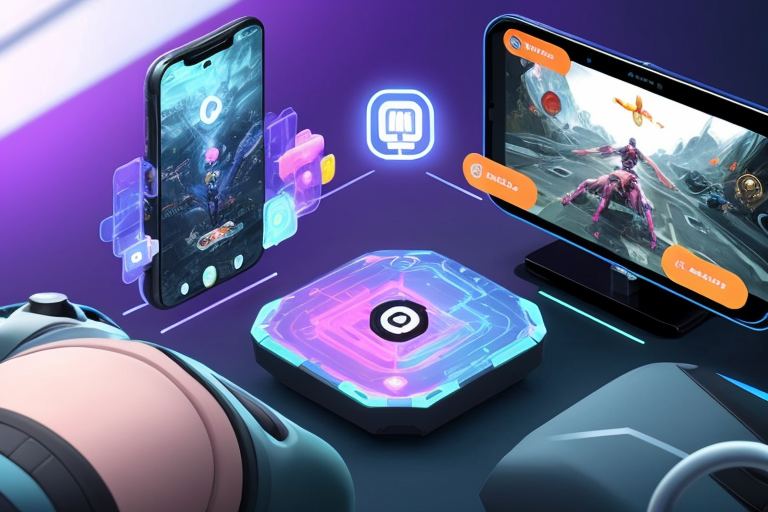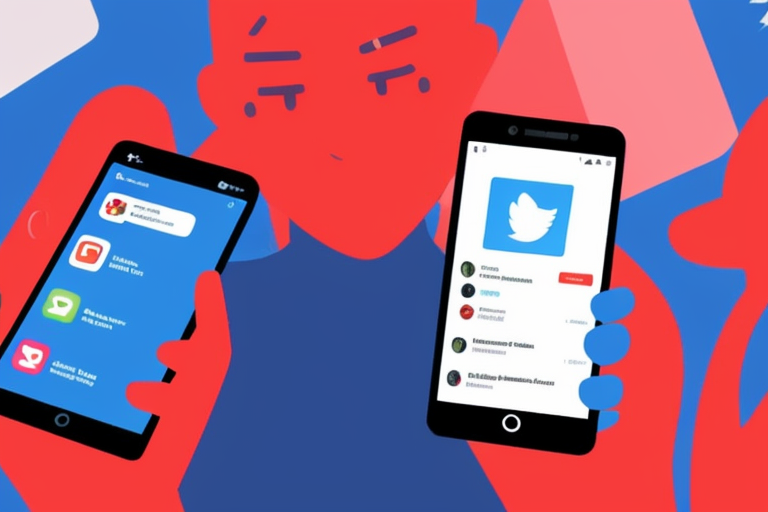The Rise of 5G: A New Era for Mobile Gaming
The world of mobile gaming is about to undergo a major transformation with the advent of 5G technology. 5G is the fifth generation of mobile network technology that promises to deliver lightning-fast speeds, lower latency, and more responsive gaming experiences. Unlike its predecessors, 5G is not just an incremental upgrade but a game-changer that will revolutionize the way we play games on our mobile devices.
So, what exactly is 5G, and how does it differ from previous mobile network technologies? Simply put, 5G is a new wireless network technology that promises to deliver faster speeds, lower latency, and more reliable connectivity than 4G LTE. It uses higher frequency radio waves and advanced antenna technology to provide faster data transfer rates and lower latency than previous mobile network technologies.
The importance of 5G for mobile gaming cannot be overstated. With the rise of mobile gaming, there is a growing demand for faster and more reliable connectivity. 5G promises to deliver on this demand by providing faster download and upload speeds, lower latency, and more responsive gaming experiences. This means that gamers will be able to play their favorite games with less lag and faster load times, making for a more enjoyable and immersive gaming experience.
In addition to faster speeds and lower latency, 5G also has the potential to enable more immersive and responsive gaming experiences. With its higher bandwidth and lower latency, 5G can support more complex and data-intensive games that were not possible on previous mobile network technologies. This means that game developers will be able to create more realistic and immersive games that take advantage of the full potential of 5G.
The Future of Mobile Gaming with 5G
Mobile gaming has come a long way since the days of Snake and Tetris on Nokia phones. Today, millions of people around the world play mobile games on their smartphones, tablets, and other devices. With the advent of 5G technology, the future of mobile gaming looks brighter than ever before.
One of the most significant benefits of 5G for mobile gaming is the lightning-fast speeds it offers. With download speeds of up to 10 gigabits per second, 5G networks can deliver game content and updates in a matter of seconds. This means that players can start playing games faster and spend less time waiting for downloads and updates.
But speed is not the only advantage of 5G for mobile gaming. Lower latency is another critical factor that can enhance the gaming experience. Latency refers to the delay between when a player performs an action and when the game responds. With 5G, latency can be reduced to less than one millisecond, which means that players can enjoy more responsive and accurate gameplay.
In addition to speed and latency, 5G also has the potential to offer more immersive and interactive gaming experiences. With the increased bandwidth and lower latency of 5G networks, game developers can create games that are more realistic and responsive than ever before. For example, games could use augmented reality (AR) and virtual reality (VR) to create immersive environments that players can explore and interact with.
Another exciting aspect of 5G for mobile gaming is its potential to enhance the social aspect of gaming. With faster speeds and lower latency, players can connect and play with each other in real-time, regardless of their location. This means that mobile gaming can become more social and inclusive, bringing together players from different parts of the world.
Frankie, a popular mobile game that involves racing and stunts, is a great example of how 5G can enhance the social aspect of mobile gaming. With 5G, players can compete against each other in real-time, without worrying about lag or connectivity issues. They can also share their gameplay experiences with others, creating a sense of community and camaraderie among players.
As the son of a mobile gamer, I can attest to the appeal of mobile gaming for younger generations. With 5G, the future of mobile gaming looks even brighter, offering faster speeds, lower latency, and more immersive and interactive experiences. However, game developers will face challenges as they adapt to the new technology, such as optimizing their games for different devices and networks.
The Tech Behind the Revolution: How 5G Will Transform Mobile Gaming
The advent of 5G technology is set to revolutionize the mobile gaming industry, offering gamers an unprecedented level of speed, responsiveness, and immersion. But what exactly makes 5G so different from previous mobile network technologies? In this section, we’ll explore the technologies and innovations that will enable 5G to deliver on its promise of improved gaming experiences.
At its core, 5G is all about speed. It promises to deliver data transfer rates that are up to 100 times faster than 4G, with the potential for even faster speeds in the future. This is made possible by a combination of new wireless communication technologies, such as millimeter-wave (mmWave) and massive MIMO (multiple-input, multiple-output), as well as improvements to existing technologies like LTE (Long-Term Evolution).
One of the key benefits of 5G for mobile gaming is its lower latency, or the time it takes for data to travel between a device and a network. With 5G, latency is expected to be reduced to just a few milliseconds, compared to the tens of milliseconds typical of 4G networks. This means that gamers will experience much less lag and delay, resulting in a more responsive and immersive gaming experience.
In addition to speed and lower latency, 5G also promises to enable more immersive and interactive gaming experiences. For example, the increased bandwidth of 5G networks will allow for higher-quality video and audio streaming, as well as more advanced graphics and visual effects. This could lead to new types of games that are more cinematic and story-driven, with a greater emphasis on immersive environments and realistic physics simulations.
To make all of this possible, 5G networks will require a range of new devices and hardware. For example, mobile devices will need to be equipped with 5G-capable modems and antennas, and game developers will need to create games that are optimized for 5G networks. In addition, new technologies like edge computing and network slicing will be used to optimize the performance of 5G networks for gaming applications.
Overall, the technologies and innovations that make 5G possible are set to transform the mobile gaming industry in ways that were previously unimaginable. With lightning-fast speeds, lower latency, and more immersive experiences, 5G will enable gamers to enjoy a new level of responsiveness and interactivity. As we move into the future, it will be exciting to see how game developers and mobile network operators continue to innovate and push the boundaries of what’s possible with 5G technology.
The Future of Mobile Gaming with 5G
As we have seen, 5G technology has the potential to revolutionize mobile gaming. With its lightning-fast speeds and lower latency, 5G will enable more immersive and responsive gaming experiences. But what does the future of mobile gaming with 5G look like? In this section, we will explore the new types of games that will benefit from 5G and the challenges that game developers will face as they adapt to this new technology.
One of the most exciting aspects of 5G technology is the potential for new types of games that were not possible before. For example, Uvanni is a new game that takes advantage of 5G’s high speeds and low latency to create a massive multiplayer game that can be played in real-time. Players can interact with each other in a virtual world that feels like a real-life experience. This type of game would not be possible without 5G technology.
Another area where 5G will have a significant impact is in the development of augmented reality (AR) and virtual reality (VR) games. With 5G’s high speeds and low latency, AR and VR games can be more immersive and responsive than ever before. Imagine playing a VR game where you can move and interact with objects in real-time, without any lag or delay. This type of experience will be possible with 5G technology.
However, game developers will face significant challenges as they adapt to this new technology. They will need to judge the best way to use 5G in their games, balancing the benefits of high speeds and low latency with the potential cost of data usage. They will also need to consider the impact of 5G on battery life and device performance. These challenges will require game developers to be creative and innovative as they explore the possibilities of 5G technology.
Finally, the future of mobile gaming with 5G will be shaped by a new generation of mobile gamers. These are the sons and daughters of today’s mobile gamers, who will grow up with 5G technology as a standard part of their gaming experience. This new generation of gamers will have different expectations and demands than previous generations, and game developers will need to adapt to meet their needs.
Deployment of 5G Networks Globally
5G technology is currently being deployed around the world, with some countries leading the way in terms of coverage and availability. South Korea was the first country to launch a 5G network in April 2019, followed by the United States and China. Other countries, including Japan, Australia, and parts of Europe, have also launched their 5G networks.
However, the deployment of 5G networks has not been without its challenges. One of the biggest obstacles has been the cost of building the necessary infrastructure. 5G networks require more base stations than previous mobile network technologies, which means that more towers and antennas need to be installed. This has led to concerns about the environmental impact of 5G, as well as the potential health risks associated with increased exposure to radio waves.
Despite these challenges, the deployment of 5G networks is expected to continue at a rapid pace. According to a report by Ericsson, there will be over 1 billion 5G subscriptions by the end of 2023, with North America and Asia leading the way in terms of adoption.
So, what does this mean for mobile gamers? As 5G networks become more widely available, mobile gamers will be able to enjoy faster speeds, lower latency, and more immersive gaming experiences. This is because 5G networks have the potential to deliver data at speeds up to 100 times faster than 4G networks, with latency as low as 1 millisecond.
However, the availability of 5G networks for mobile gaming will depend on a number of factors, including the location of the user and the type of device they are using. While some areas may have 5G coverage, others may only have access to 4G or even 3G networks. Additionally, not all devices are currently compatible with 5G networks, which means that users may need to upgrade their devices in order to take advantage of the technology.
Overall, the deployment of 5G networks around the world represents a significant opportunity for mobile gamers. As the technology continues to evolve and become more widely available, we can expect to see a new era of mobile gaming that is faster, more immersive, and more responsive than ever before.









